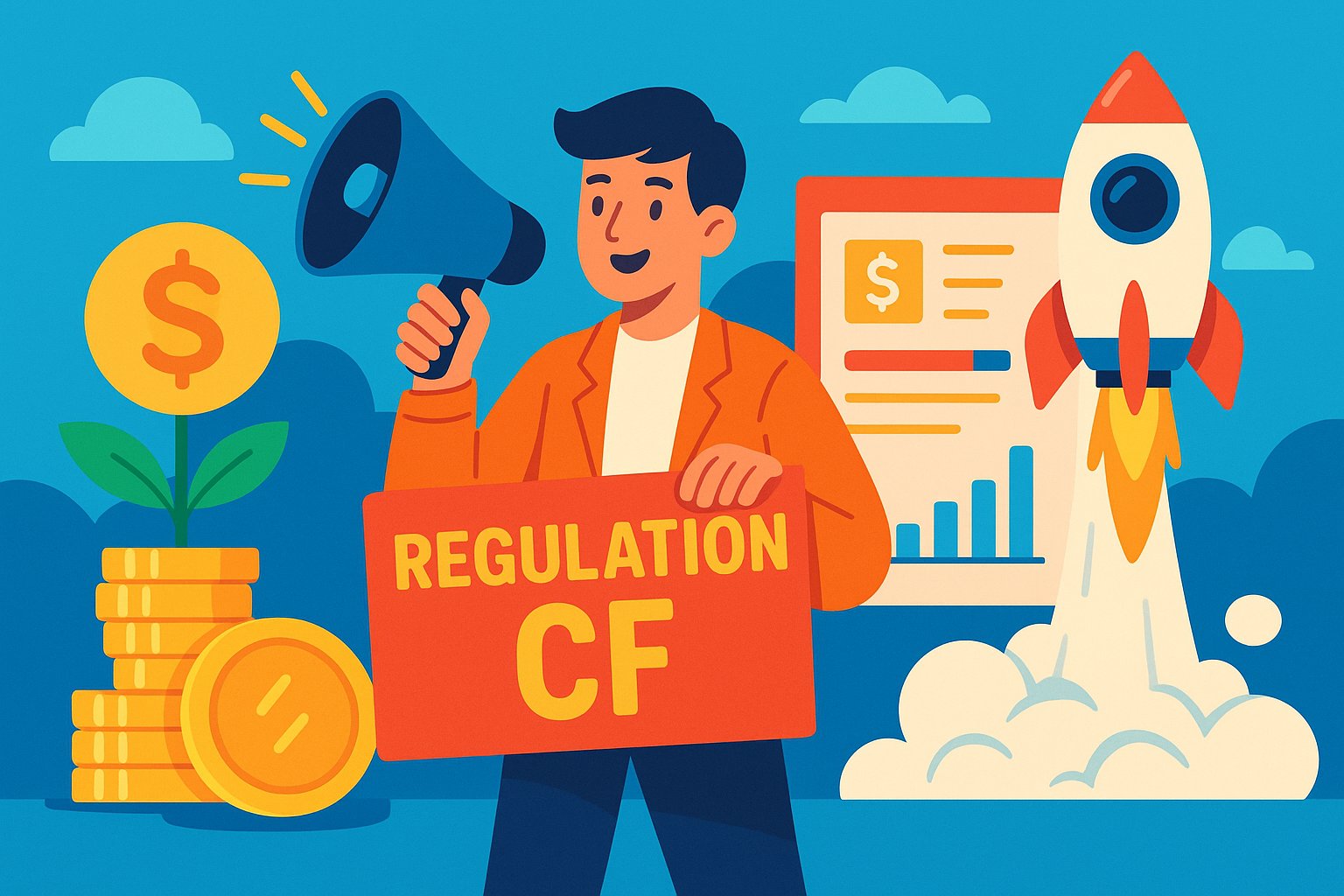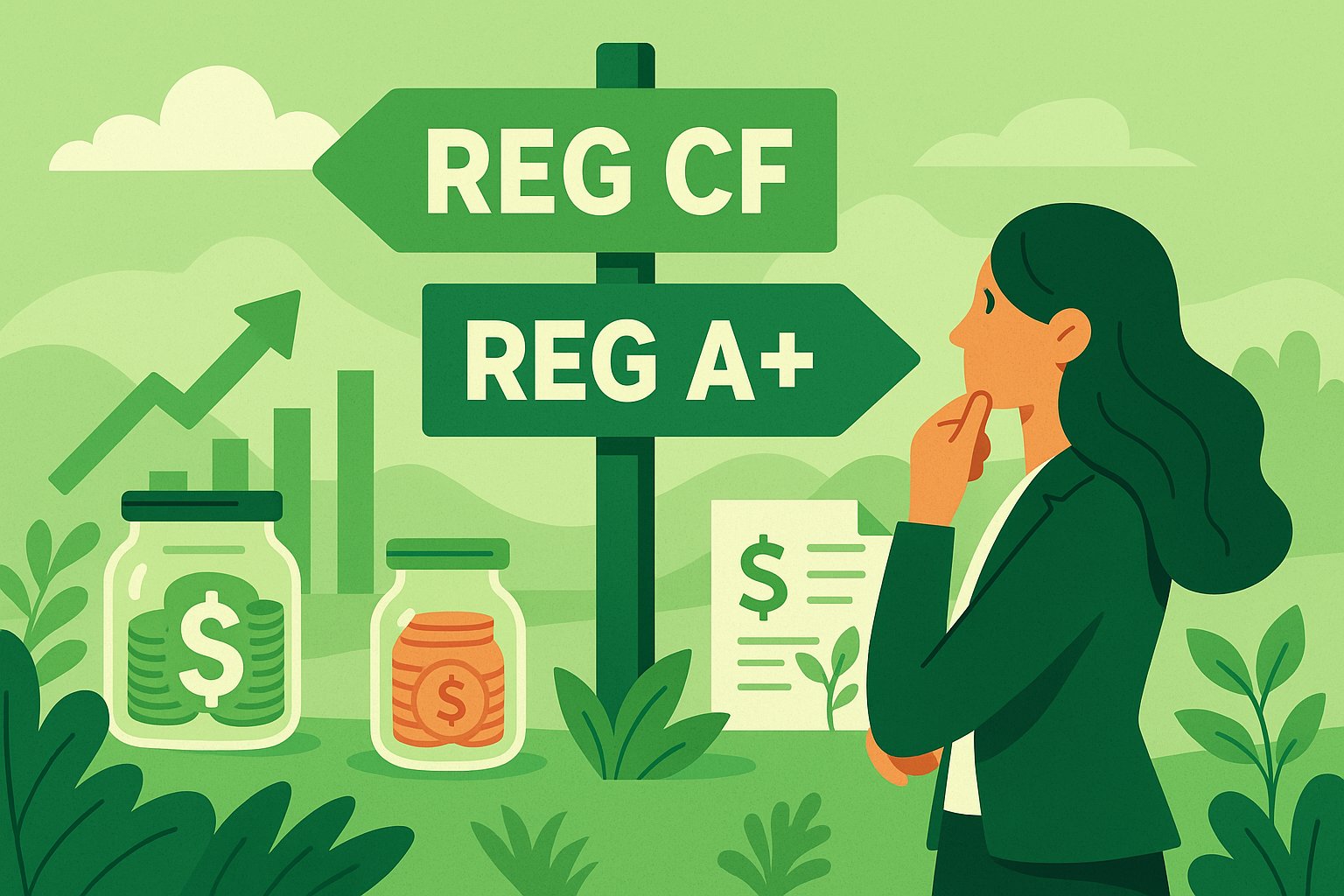The Power of Regulation CF
Equity crowdfunding has transformed the fundraising landscape, democratizing access to capital for startups and opening the door for everyday investors to support emerging ventures. At the heart of this revolution lies Regulation Crowdfunding (Reg CF), a framework established by the SEC that enables companies to raise up to $5 million per year from both accredited and non-accredited investors. Yet navigating these waters requires more than enthusiasm—it demands meticulous planning, legal compliance, and compelling storytelling. This comprehensive guide equips founders with every step needed to launch a successful Reg CF campaign: from understanding regulatory guardrails and crafting persuasive offering materials to engaging a community of backers and maintaining momentum long after the spotlight fades. Whether you’re a first-time founder or a seasoned entrepreneur exploring equity crowdfunding for the first time, you’ll gain actionable insights to structure your campaign, capture investor excitement, and maximize your chances of not only meeting but surpassing your funding goals.
Laying the Groundwork: Legal and Compliance Essentials
Before you draft a single slide or shoot your first promotional video, it’s crucial to grasp the legal framework that governs Reg CF offerings. Under this regulation, companies file an offering statement (Form C) with the SEC, detailing financial statements, business plans, and risk factors. You must engage a qualified securities attorney to ensure your Form C is accurate, complete, and compliant with Regulation Crowdfunding’s disclosure requirements. Audited financials may be necessary for larger raises, and state securities laws—known as Blue Sky regulations—must be navigated on a state-by-state basis unless you qualify for certain exemptions. Developing a timeline for legal review, SEC comments, and state filings helps prevent last-minute surprises. By investing in thorough compliance work upfront, you establish credibility with regulators and investors alike, laying a solid foundation for your campaign’s success.
Crafting Your Narrative: Building a Compelling Pitch
At its core, crowdfunding is a story-driven endeavor. Investors want more than metrics; they crave a narrative that connects on an emotional level. Begin by articulating your mission in clear, concise language: what problem are you solving, who benefits, and why now is the ideal moment to act. Develop a pitch deck that weaves together market research, competitive analysis, product demonstrations, and founder bios, all framed within a captivating storyline. Incorporate video testimonials from early adopters or pilot customers to showcase real-world impact. A strong narrative establishes trust, conveys urgency, and lays out a vision that investors can rally behind. Remember, your pitch is not a one-off artifact—it serves as the blueprint for your website, email campaigns, social media posts, and live presentations. Consistency across these channels reinforces your message and amplifies your reach.
Charting Financial Direction: Setting Your Funding Target
Determining the right funding goal is both an art and a science. Under Reg CF, you can set a minimum raise (the amount you need to proceed) and a maximum raise (the cap on investment you’re willing to accept). Too low a minimum risks failure if you miss your threshold; too high a maximum may deter investors worried about dilution. Analyze your startup’s runway: calculate monthly burn rate, projected revenue milestones, and contingency buffers for unforeseen expenses. Align your funding ask with specific use-of-proceeds categories—such as hiring, product development, marketing, and legal costs—and present these allocations transparently in your offering materials. Clarity on how funds will be deployed builds investor confidence and demonstrates financial discipline. Additionally, consider offering early-bird incentives, like discounted valuation or bonus perks, to spur initial momentum and attract strategic lead investors.
Engaging Your Tribe: Marketing and Community Outreach
A Reg CF campaign is not a passive affair; it thrives on proactive outreach. Begin by mapping your existing network: friends, family, alumni associations, and professional contacts. Craft personalized messages that invite these warm leads to participate early. Concurrently, build an email list and social media presence to reach broader audiences. Host virtual town halls or “ask me anything” sessions to foster authentic dialogue and address concerns in real time. Leverage content marketing—blog posts, podcasts, and webinars—to showcase your expertise and the problem your venture tackles. Collaborate with industry influencers and niche communities to tap into their followers. Every interaction should drive potential investors to your Reg CF portal landing page, where they can review offering details and subscribe for updates. Sustained engagement over weeks—rather than a single launch event—cultivates a sense of momentum and social proof that attracts new backers.
Picking Your Platform: Choosing the Right Portal Partner
Reg CF offerings require a portal or broker-dealer registered with the SEC and FINRA. Platforms differ in fee structures, audience size, and service offerings. Some portals boast specialized industry communities—tech startups, consumer products, or social impact ventures—while others emphasize educational resources and investor dashboards. Evaluate portals based on their track record of successful campaigns, average raise amounts, user interface, and marketing support. Understand their fee models: platforms typically charge a percentage of the total funds raised plus a fixed fee, so compare net proceeds projections across options. Assess their investor network demographics to ensure alignment with your target audience. A portal that provides campaign coaching, press connections, and post-launch reporting tools can be invaluable for first-time founders seeking hands-on guidance.
Structuring Your Offering: Transparency and Disclosure
Transparency is the linchpin of investor trust. Your Form C must disclose not only product highlights but also potential pitfalls—market competition, regulatory hurdles, technology adoption risks, and key person dependencies. Include clear descriptions of share class terms: valuation, equity percentage offered, voting rights, and any investor protections. Present financial projections with realistic assumptions and provide context for key metrics, such as customer acquisition costs or lifetime value. If you’ve completed pilot programs or have letters of intent from customers, showcase those outcomes to substantiate your claims. Transparency extends to formatting: use readable charts, straightforward language, and accessible FAQs. When investors feel that they’ve received the full story—pros and cons alike—they’re more likely to commit and spread positive word of mouth.
Pre-Launch Practices: Building Anticipation and Credibility
Before flipping the switch to live, dedicate several weeks to a “soft launch” phase. Invite a select cohort of early backers—your closest supporters and network influencers—to preview the offering. Encourage them to provide feedback on messaging, materials, and process flow, then incorporate their insights to refine your campaign. Simultaneously, secure public relations coverage in industry publications and local news outlets, highlighting your upcoming raise as a milestone moment. Publish a press release announcing your campaign timeline and the opportunity for community participation. Offer behind-the-scenes glimpse videos of product development or team interviews to humanize your brand. This pre-launch buzz primes the wider audience, ensuring that on Day One, traffic spikes to your portal, driving momentum and building FOMO (fear of missing out).
Launch Day Dynamics: Maximizing Momentum
The first 48 hours of your live campaign set the tone for overall success. Coordinate a multi-channel launch outreach: email blasts, social media countdowns, targeted ads, and personal follow-up calls. Leverage any lead investors to endorse your offering publicly—testimonials from respected figures serve as powerful social proof. Monitor investor inquiries closely, responding swiftly to questions and addressing concerns transparently. Highlight real-time milestones—such as hitting 25% of your minimum raise—as social media updates to generate excitement. Consider hosting a live-streamed Q&A or product demo on launch day to engage audiences and convert watchers into backers. Rapid early traction signals platform algorithms and investor networks that your campaign is worth attention, fueling a virtuous cycle of visibility and investment.
Sustaining the Surge: Post-Launch Engagement
A successful launch is only the beginning. To maintain momentum, establish a regular update cadence—weekly or bi-weekly—to share progress on product development, customer acquisition, and new partnerships. Frame these updates as narratives, weaving small wins and learnings into an ongoing story that keeps investors emotionally invested. Celebrate key milestones—production run completions, beta user onboarding, or regulatory approvals—and acknowledge the role of your crowdfunding community in reaching those achievements. When challenges arise—delays, unexpected expenses, or supply chain hiccups—communicate openly about mitigation strategies. Proactive transparency reinforces investor confidence and discourages rumor-driven second-guessing. As your campaign inches toward its deadline, intensify calls-to-action by showcasing how closing the funding gap will unlock the next phase of growth.
Crossing the Finish Line: Best Practices for Closing Success
Approaching your campaign deadline requires strategic acceleration. Host a “Last Chance” virtual event to drum up urgency and allow undecided investors to pose final questions. Offer closing-period perks, such as product discounts, exclusive equity bonuses, or invitations to advisory forums, for last-minute commitments. Leverage platform features—like countdown timers and progress bars—to visually illustrate proximity to your goal. Coordinate a “closing bell” moment, inviting backers to share celebratory posts on social media with your official hashtag. After the campaign ends, promptly follow through on promised perks and administrative tasks: send digital stock certificates, thank-you notes, and investor kits. Ensure your portal reconciliation aligns with projected funds, and if you’ve exceeded your maximum raise, work with your legal team and platform to address over-subscription in accordance with your Form C terms.
Learning from the Field: Case Studies in Reg CF Triumph
Real-world examples illuminate best practices and common pitfalls. Consider the startup that engaged its community months before launch by offering an “insider’s club” for newsletter subscribers, translating a 10% conversion rate into a rapid 30% of its minimum raise on Day One. Another success story involved a hardware innovator who shared weekly prototype build videos, fostering intense backer loyalty and exceeding its funding cap within a week. Conversely, a founder who neglected regular updates saw investment plateau, forcing a secondary mini-campaign to hit the minimum threshold. These case studies underscore the importance of early engagement, consistent storytelling, and adaptive marketing tactics—elements you can integrate into your own Reg CF roadmap.
Beyond Regulation CF: Scaling Your Startup After the Raise
Securing capital through Reg CF is a significant milestone, but it’s merely the launchpad for your startup’s next chapter. With funds in hand, prioritize initiatives that deliver rapid, measurable returns: ramping up production, expanding your team’s expertise, or investing in customer acquisition channels with proven ROI. Maintain your investor community’s involvement by offering exclusive webinars, inviting feedback on feature prioritization, or hosting virtual meet-and-greets with the founding team. As you plan subsequent funding rounds—whether through Reg D private placements or Series A institutional raises—leverage your crowdfunding success stories as validation of market demand and founder credibility. Document performance metrics meticulously to share with prospective investors and position your company for accelerated growth.
The Horizon Ahead: Embracing the Future of Crowdfunding
Regulation CF continues to evolve alongside innovations in fintech, community engagement, and regulatory policy. Emerging trends include tokenized securities on blockchain platforms, advanced data analytics for investor matching, and hybrid models that blend equity with revenue-sharing instruments. As you reflect on your Reg CF journey, remain vigilant for new tools and platform capabilities that can enhance campaign efficiency, deepen investor relationships, and expand your fundraising toolkit. By combining rigorous compliance, compelling storytelling, proactive engagement, and strategic allocation of resources, you’ll not only master the art of launching a campaign under Regulation CF but also cultivate a vibrant ecosystem of supporters poised to champion your startup’s mission well into the future.




